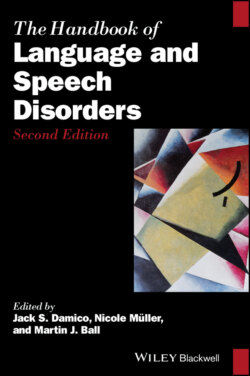Читать книгу The Handbook of Language and Speech Disorders - Группа авторов - Страница 54
3.4 Auditory Brainstem Implants
ОглавлениеA device that is essentially similar to CIs is the auditory brainstem implant (ABI). ABI systems were developed to address the auditory communication needs of patients with neurofibromatosis type‐2 (NF‐2), but have also been used with non‐tumor patients, and sometimes children, when cochlear implantation is contraindicated (Goffi‐Gomez et al., 2012). NF‐2 patients have usually undergone extensive neurosurgical intervention, at the end of which the ABI is positioned according to intraoperatively recorded electrically evoked potentials and acoustic reflexes. The ABI electrically stimulates the cochlear nucleus with an array of electrodes that are mounted on a “paddle.” One complication that has been reported is that, despite peri‐surgical efforts to position the paddle optimally, there may be in‐situ migration, particularly in children due to head growth (Sennaroğlu et al., 2016). Apart from the differences in electrode array and positioning, the hardware and the processing involved in an ABI are identical to that of a CI.
Some ABI recipients may be able to use their implant to listen, such that their speech‐perceptual performance is on a par with that of their CI counterparts, some even attaining the ability to use the telephone (Siegbahn et al., 2014). Listening performance with the implant is thought to be unrelated to the disease process, as excellent speech recognition performance has been reported in both NF‐2 and non‐NF‐2 patients alike (Colletti, Shannon, & Colletti, 2012). Instead, the overall poorer performance that is generally seen in ABI speech‐perceptual performance is thought to be related to iatrogenic complications and device issues or differences. Therefore, for many ABI recipients, the benefit provided by the implant will support low‐level tasks, including awareness of ambient sounds and support for speech‐reading, while nuanced speech‐perceptual tasks like prosody perception and higher‐order levels of communication will be unattainable.
